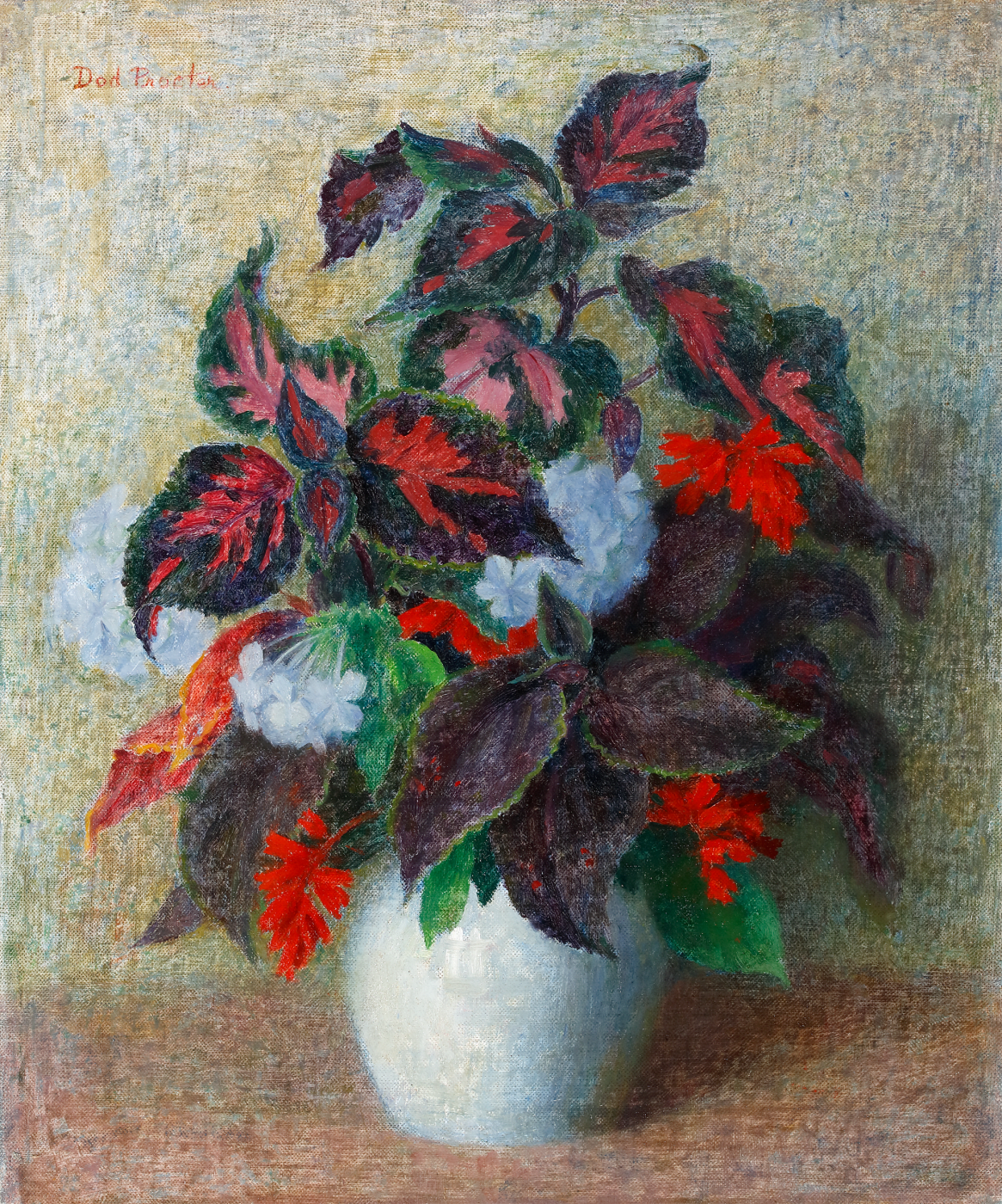In this film, Philip breaks down the colourful elements of this masterful still life of flowers to impart an understanding of how its intricate paint-work composes a luminous, cohesive, and harmonious whole. Dod Procter, the artist behind this flower painting, was born in Hampstead in 1890. It was not until she was seventeen that she moved to Newlyn with her family and began to integrate with the Cornish School: here, Dod would meet her husband, Ernest Procter, and produce some of the finest work of her generation. By the mid-1920s, Dod Procter was a household name, following the display of one of her works at the Royal Academy in 1927. The painting, entitled Morning, was voted 'Picture of the Year' and was purchased by the Daily Mail for the nation, rocketing the artist to fame.
Throughout her prolific career, Dod exhibited around sixty-five still life works at the Royal Academy. The present painting of Caladiums, a flower originating from the rainforests in South America, was painted later in her life, following the death of her beloved husband in 1935. Procter has moved away from the direct, realist style of her earlier work, and instead opts for a more impressionist technique, with a greater emphasis on surface texture. The juxtaposition of bright colours results in optical mixing, making the work appear as a jigsaw puzzle of colours and shapes up close, but a tangible whole when viewed at a distance. This almost pointillist technique was mastered by Dod in her lifetime, and we see her employ this method of paint application again and again throughout this later period. Her masterful use of colour has been enhanced by her employment of a white underpainting, which allows the reds, purples and greens layered on top to sing, and appear almost luminous.




